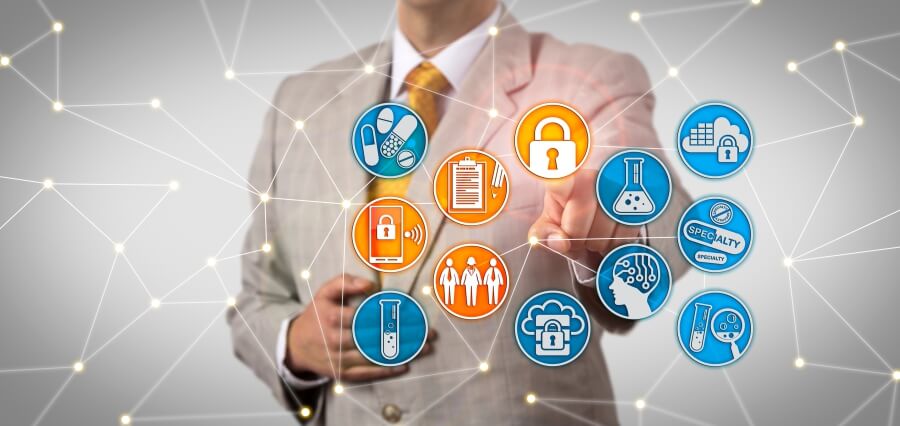Cybersecurity in Pharma
In today’s rapidly advancing technological landscape, the pharmaceutical industry stands at the forefront of innovation. With the digital transformation of processes and the increasing reliance on technology, the need for robust cybersecurity measures has never been more critical. This article explores the intricacies of cybersecurity in the pharma sector, emphasizing the protection of sensitive data in an era dominated by technology.
Importance of Cybersecurity in Pharma
The pharmaceutical industry deals with a treasure trove of sensitive data, ranging from research findings and clinical trial results to patient information. The consequences of a cybersecurity breach in this sector can be catastrophic, not only jeopardizing intellectual property but also putting patient safety at risk.
Overview of Sensitive Data in Pharma
Before delving into the nuances of cybersecurity, it’s essential to understand the nature of sensitive data in the pharmaceutical realm. This includes proprietary drug formulations, patient records, and regulatory compliance documentation.
Current Cybersecurity Landscape
Recent Cyber Threats in Pharma
Pharmaceutical companies have become prime targets for cybercriminals seeking to exploit vulnerabilities in their digital infrastructure. Recent incidents highlight the growing sophistication of attacks, emphasizing the urgent need for proactive cybersecurity measures.
Impact on Sensitive Data
A breach results in financial losses and can compromise the integrity and confidentiality of sensitive data. The potential fallout includes damage to the company’s reputation and legal ramifications.
Regulatory Framework
Compliance Standards in Pharma
Regulatory bodies have imposed stringent cybersecurity standards on pharmaceutical companies to counteract the escalating threats. Adherence to these standards is not only a legal requirement but also a crucial step in safeguarding sensitive data.
Consequences of Non-Compliance
Failure to comply with cybersecurity regulations can lead to severe consequences, ranging from hefty fines to the suspension of operations. This section explores the repercussions of non-compliance and emphasizes the importance of a robust regulatory framework.
Challenges in Cybersecurity
Phishing and Social Engineering
Cyber threats often exploit human vulnerabilities through phishing and social engineering tactics. Recognizing and addressing these challenges is paramount in fortifying the human firewall against cyber attacks.
Insider Threats
While external threats are significant, internal risks, whether intentional or unintentional, pose a considerable danger. Implementing measures to mitigate insider threats is a critical aspect of a comprehensive cybersecurity strategy.
Technological Challenges
The rapid evolution of technology presents both opportunities and challenges for cybersecurity. This section discusses the challenges posed by emerging technologies and explores solutions to stay ahead of potential threats.
Best Practices in Pharma Cybersecurity
Encryption and Data Protection
Implementing robust encryption protocols ensures the secure transmission and storage of sensitive data. This section outlines best practices for encryption and data protection tailored to the pharmaceutical industry.
Regular Security Audits
Frequent security audits are essential to identify vulnerabilities and ensure the ongoing effectiveness of cybersecurity measures. This includes penetration testing, vulnerability assessments, and continuous monitoring.
Employee Training Programs
Employees are often the weakest link in cybersecurity. Establishing comprehensive training programs enhances awareness and equips staff with the knowledge to recognize and respond to potential threats.
Emerging Technologies
AI and Machine Learning in Cybersecurity
Artificial intelligence and machine learning play a pivotal role in predicting and mitigating cyber threats. This section explores how these technologies are reshaping the cybersecurity landscape in the pharmaceutical industry.
Blockchain for Data Integrity
Blockchain technology offers a decentralized and tamper-proof ledger, ensuring the integrity of sensitive data. This section discusses the potential applications of blockchain in pharmaceutical cybersecurity.
Case Studies
Successful Cybersecurity Implementation
Examining real-world examples of successful cybersecurity implementation provides valuable insights. This section showcases companies that have effectively protected their sensitive data and draws lessons from their experiences.
Lessons Learned from Cyber Attacks
Analyzing past cyber attacks offers a learning opportunity. This section explores the lessons learned from notable incidents, emphasizing the importance of continuous improvement in cybersecurity strategies.
Collaboration in the Pharma Industry
Sharing Threat Intelligence
Collaboration within the pharmaceutical industry is crucial for collectively combating cyber threats. Sharing threat intelligence enhances the overall cybersecurity posture, creating a united front against cybercriminals.
Industry-wide Initiatives
This section highlights ongoing industry-wide initiatives aimed at strengthening cybersecurity. From collaborative research to shared resources, these initiatives foster a culture of mutual support and resilience.
Future Trends
Anticipated Threats
Predicting future threats allows pharmaceutical companies to prepare adequately. This section examines potential cybersecurity threats on the horizon and discusses strategies to stay ahead of the curve.
Evolution of Cybersecurity Measures
As technology evolves, so must cybersecurity measures. This section explores the anticipated evolution of cybersecurity in the pharmaceutical industry and the proactive steps companies can take to adapt.
Conclusion
In conclusion, cybersecurity in the pharmaceutical industry is not just a necessity; it’s an ongoing commitment to protect sensitive data and ensure the integrity of operations. With the ever-evolving threat landscape, companies must remain vigilant, embracing the latest technologies and best practices to stay one step ahead of cybercriminals.





